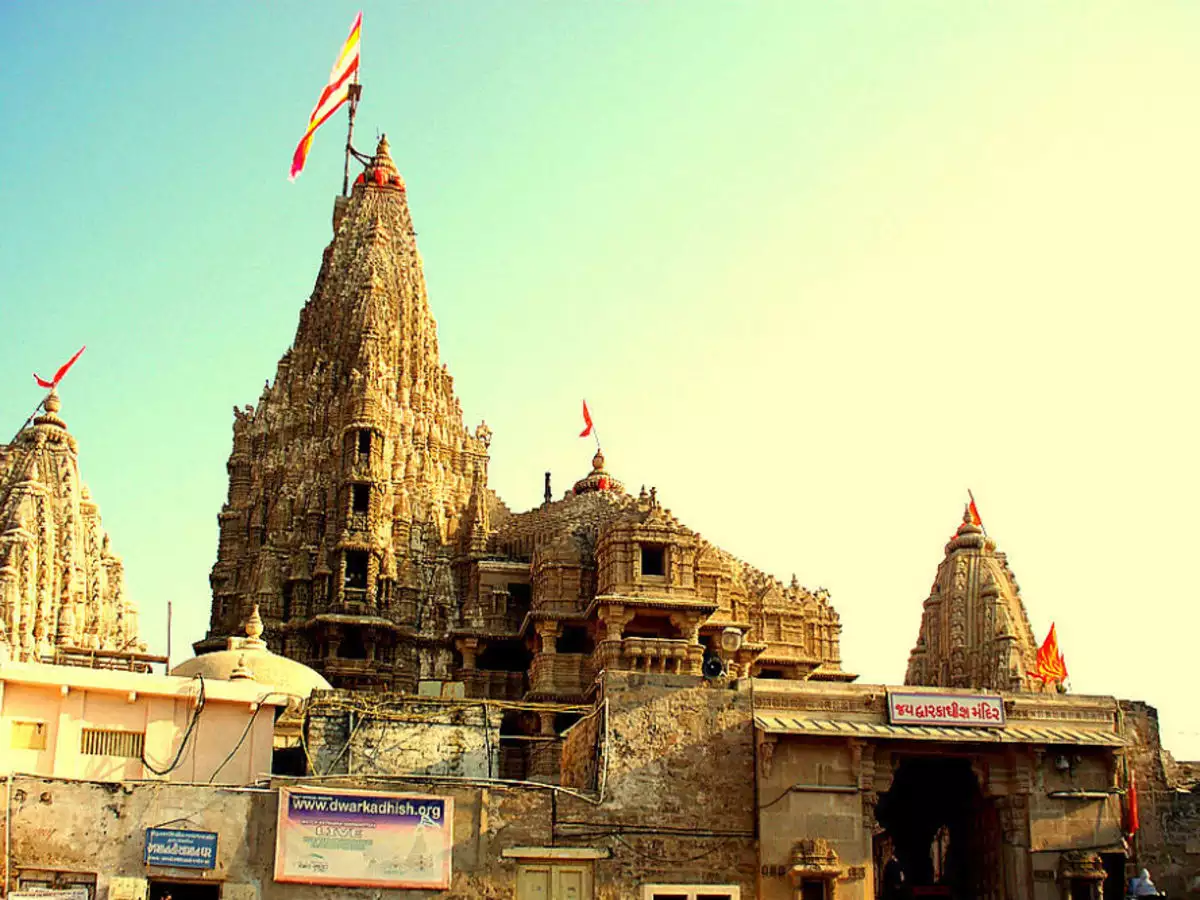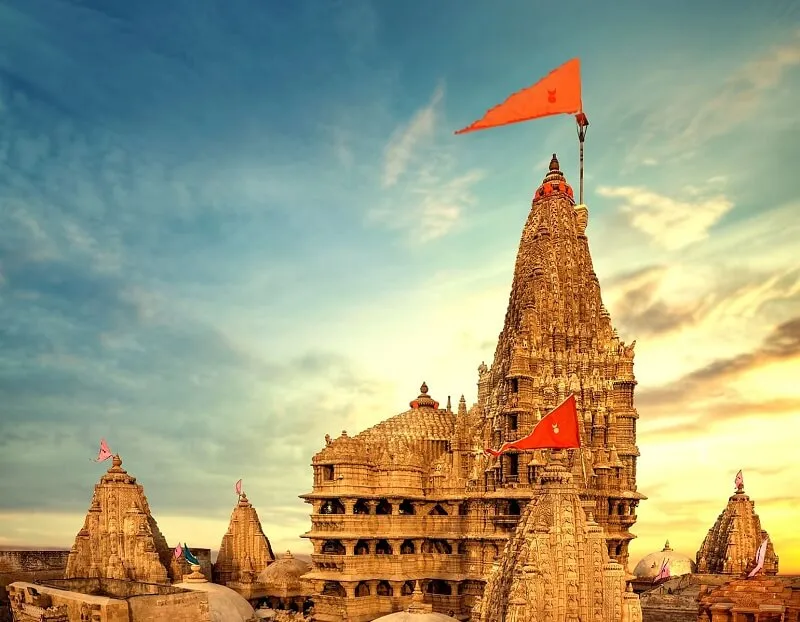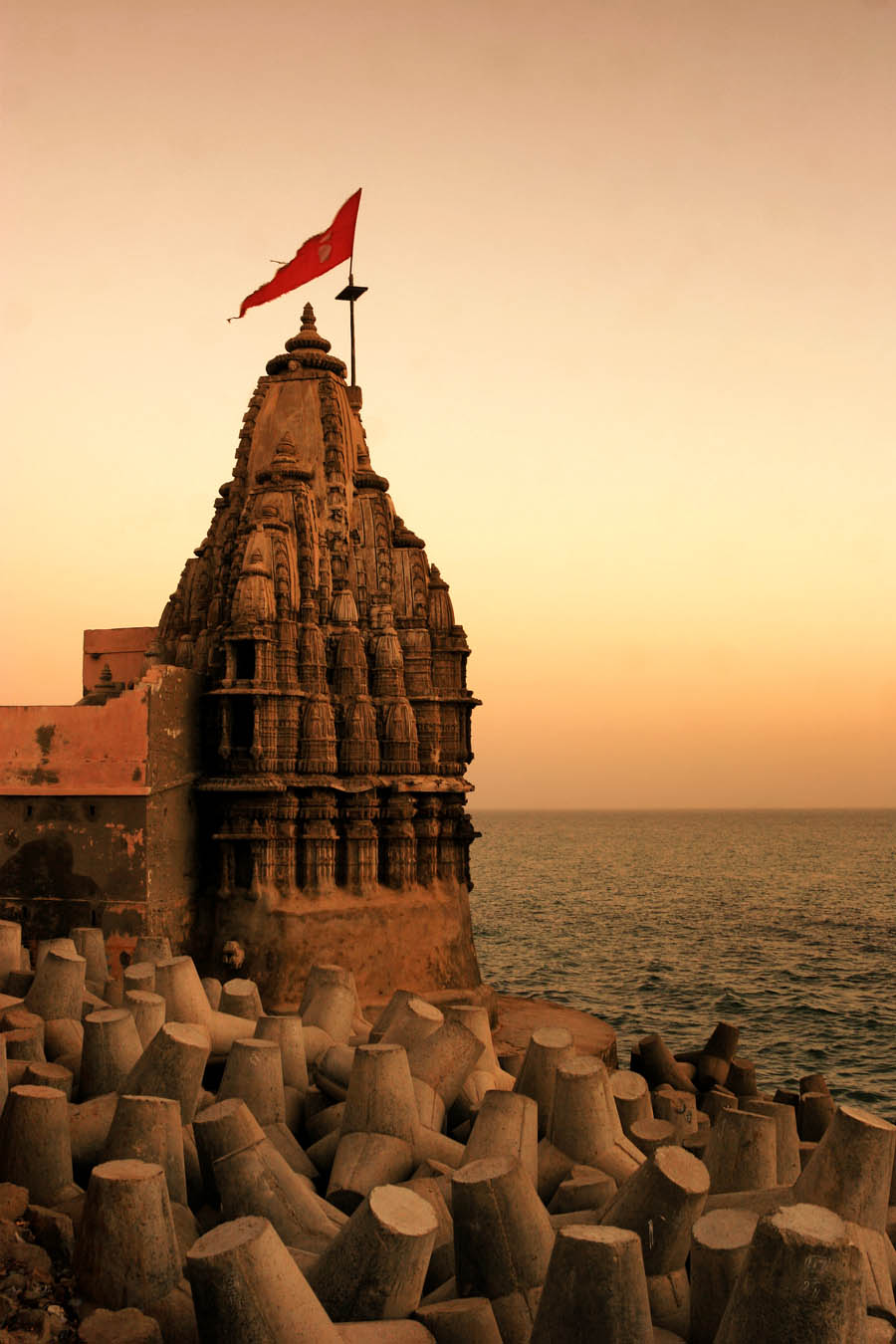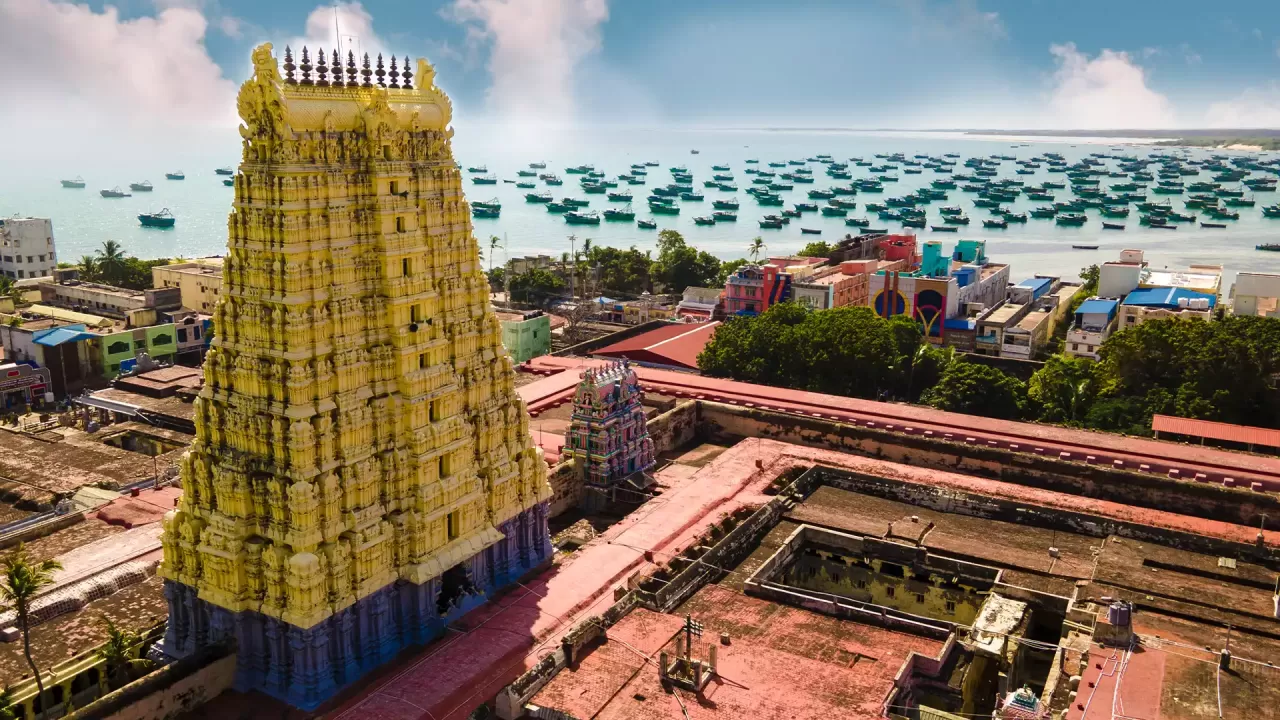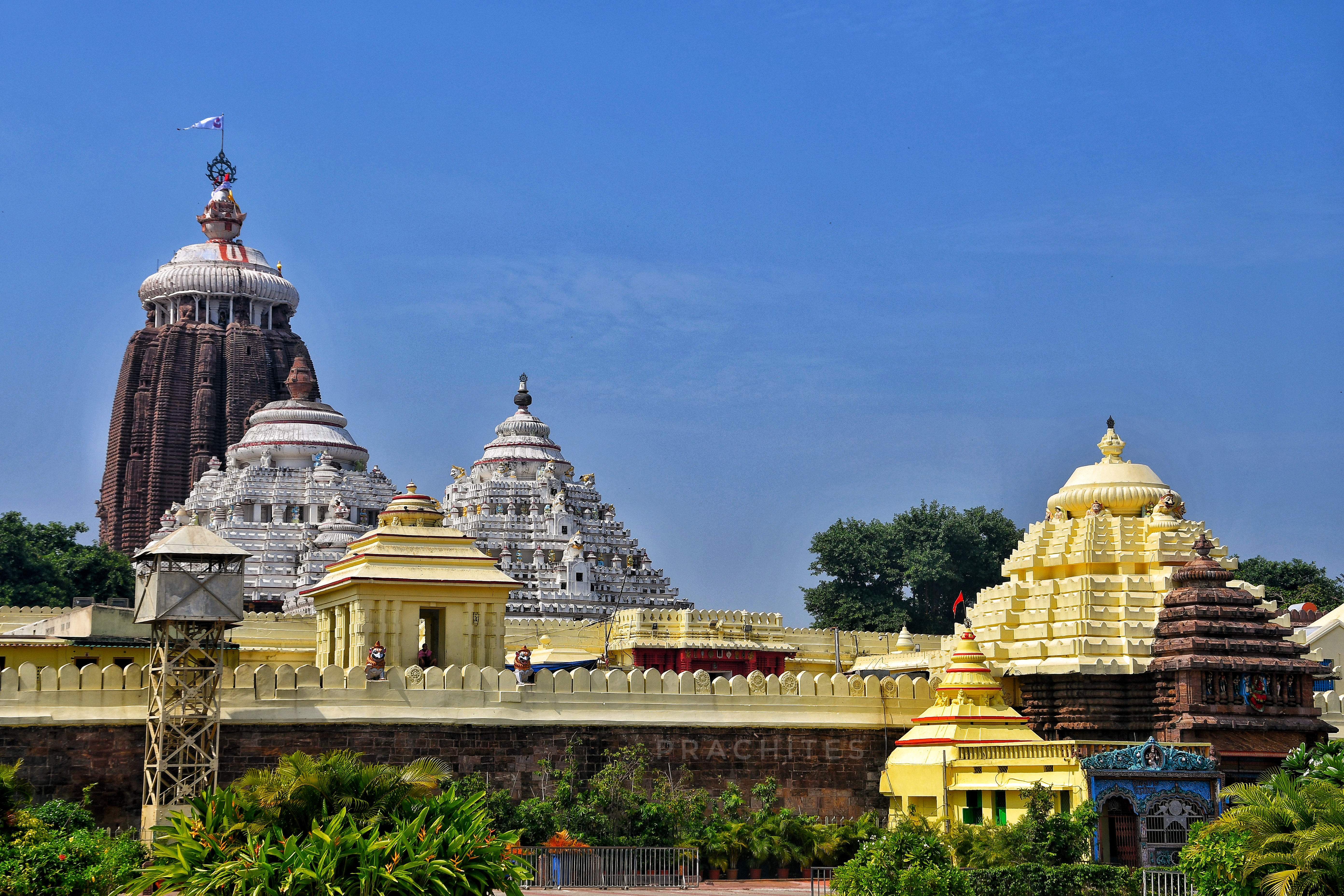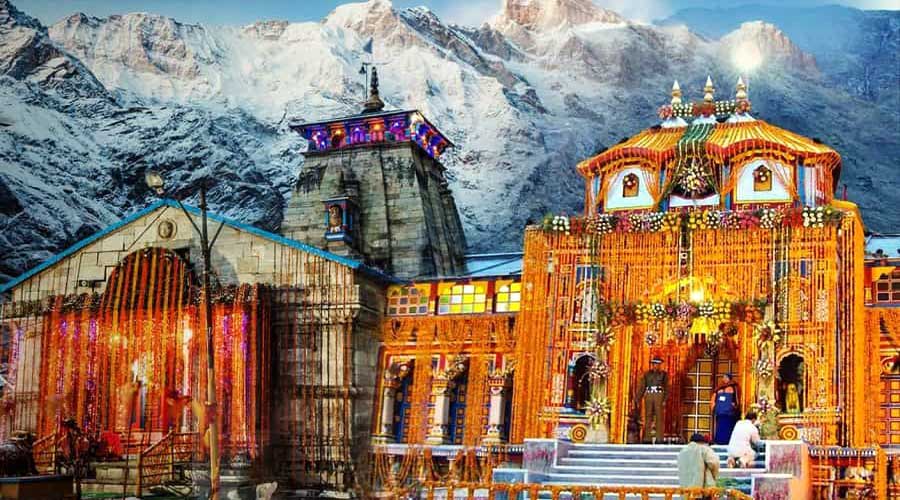History Of Dwarkadhish Temple
Location: Dwarka, Gujarat, India
The Dwarkadhish temple, also known as the Jagat Mandir and occasionally spelled Dwarakadheesh, is a Hindu temple dedicated to Krishna, who is worshiped here by the name Dwarkadhish, or 'King of Dwarka'. The temple is located at Dwarka city of Gujarat, India, which is one of the destinations of Char Dham, a Hindu pilgrimage circuit. The main shrine of the five-storied building, supported by 72 pillars, is known as Jagat Mandir or Nija Mandir. Archaeological findings suggest the original temple was built in 200 BCE at the earliest. The temple was rebuilt and enlarged in the 15th–16th century.
The town of Dwarka in Gujarat has a history that dates back centuries, and mentioned in the Mahabharata epic as the Dwaraka Kingdom. Situated on the banks of river Gomti, the town is described in legend as the capital of Krishna. Evidence such as a stone block with script, the way the stones were dressed showing that dowels had been used, and an examination of anchors found on the site suggest that the harbour site dates only to historical times, with some of the underwater structure being late Medieval. Coastal erosion was probably the cause of the destruction of what was an ancient port.
In the fifteenth century the Raja of Dwarka was a Vadhel named Bhim who also ruled the local Vagher pirates. When a maulana named Mahmud Samarqandi was undergoing a sea voyage a storm cause his vessel to go towards the coast of Dwarka. There the ship was attacked by Vagher pirates who plundered the ship, kidnapped his women, and left Mahmud and his sons adrift. Mahmud Samarqandi brought this matter to Sultan Mahmud at his court in Mustafabad. Thus the sultan decide to capture Dwarka and in 1473 began marching towards the city. The Raja of Dwarka Bhim and his Rajputs fled the city to the island fortress of Bet, allowing Mahmud Begada to plunder Dwarka, destroy buildings and the Dwarkadhish temple and destroy its idol.
Structure
The temple covers area of 27-metre by 21-metre with east–west length of 29-metre and north–south width of 23 metres. The temple is constructed of limestone and has intricate carvings
It is a five storied edifice built over 72 pillars (sandstone temple with 60 pillars is also mentioned). There are two important entrances to the temple, one is the main entry door which is called the Moksha Dvara (meaning "Door to Salvation") and the exit door which is known as the Svarga Dvara (meaning: "Gate to Heaven"). Outside this doorway are 56 steps that leads to the Gomati River.
The temple spire rises to a height of 78 metres (256 ft). A flag, hoisted over the spire, shows the sun and moon, which is believed to indicate that Krishna would be there until the sun and moon exist on Earth.The flag, triangular in shape, is 50 feet (15 m) in length. This flag is changed four times a day with a new one and Hindus pay a huge sum of money to hoist it by purchasing a new flag. The money received on this account is credited to the trust fund of the temple to meet the operation and maintenance expenses of the temple.
धार्मिक महत्व
मंदिर के ऊपर का ध्वज सूर्य और चंद्रमा को दर्शाता है, जो माना जाता है कि यह दर्शाता है कि कृष्ण तब तक रहेंगे जब तक सूर्य और चंद्रमा पृथ्वी पर मौजूद रहेंगे। ध्वज को दिन में 5 बार से बदल दिया जाता है, लेकिन प्रतीक समान रहता है। मंदिर में पचहत्तर स्तंभों पर निर्मित पांच मंजिला संरचना है। मंदिर का शिखर 78.3 मीटर ऊंचा है। मंदिर का निर्माण चूना पत्थर से हुआ है जो अभी भी प्राचीन स्थिति में है। मंदिर में क्षेत्र पर शासन करने वाले राजवंशों के उत्तराधिकारियों द्वारा की गई जटिल मूर्तिकला का विस्तार दिखाया गया है। इन कार्यों से संरचना का अधिक विस्तार नहीं हुआ। मंदिर में दो प्रवेश द्वार हैं। मुख्य प्रवेश द्वार (उत्तर प्रवेश द्वार) को "मोक्ष द्वार" कहा जाता है। यह प्रवेश द्वार एक को मुख्य बाजार में ले जाता है। दक्षिण प्रवेश द्वार को "स्वर्ग द्वार" कहा जाता है। इस द्वार के बाहर 56 सीढ़ियाँ हैं जो गोमती नदी की ओर जाती हैं।मंदिर सुबह 6 बजे से दोपहर 1.00 बजे तक और शाम 5.00 बजे से रात 9.30 बजे तक खुला रहता है। कृष्णजन्माष्टमी त्योहार, या गोकुलाष्टमी, कृष्ण का जन्मदिन वल्बा (1473-1531) द्वारा शुरू किया गया था।
